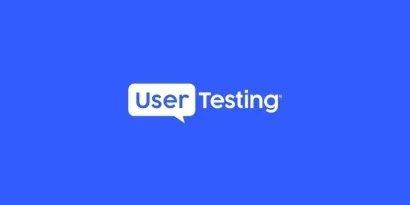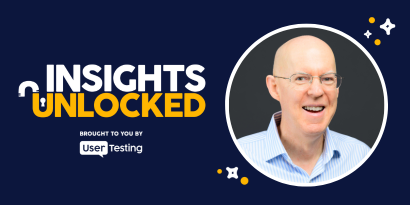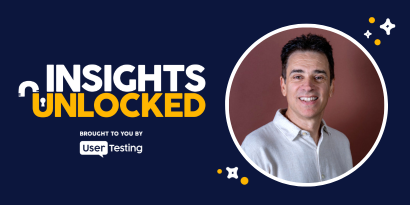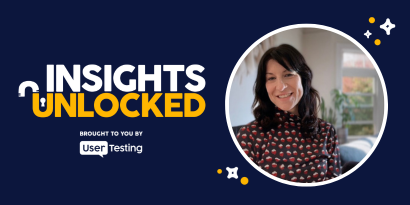
Episode 38 | April 11, 2022
Scaling customer experience with human insight
Explore how top brands scale customer experience with human insight, empathy, and innovation in this season four recap.
Why customer experience starts—and scales—with human insight
Imagine trying to assemble IKEA furniture using only the finished photo on the box—no manual, no parts list, just guesswork. That’s what building customer experiences without real human insight often looks like: a lot of assumptions, occasional alignment, and plenty of missing screws.
In the season four finale of podcast, we explore the critical role of human insight in driving exceptional customer experience. Reflecting on stories from our book User Tested, we uncover how leading organizations scale empathy, elevate UX research, and anchor business innovation in deep customer understanding.
Scaling empathy: a quiet revolution in business
Customer experience isn't a one-time effort—it's a living, evolving ecosystem. One of the central takeaways from the season was how companies are scaling empathy by embedding human insight into their day-to-day operations.
“It all comes down to how you fit into the ecosystem of your users. How do you make whatever it is you're trying to do for them better?”
The conversation dives into how businesses—from Xbox to HelloFresh—are not only listening to their users but institutionalizing that listening. These efforts include:
- Internal research hubs like HelloFresh’s monthly “insight show,” where hundreds tune in to hear what customers are saying.
- Training programs like TransferWise’s UX Research 101, opening the door for non-researchers to engage with customer feedback.
- Platforms like Microsoft’s “Hits library,” organizing insights so any employee can tap into customer sentiment.
“There’s a revolution happening—not in technology, but in listening.”
Context is king: designing beyond the screen
One of the most compelling stories comes from Harsha at T. Rowe Price, whose team streamlined an online sign-up page to just a few fields. They expected conversion to skyrocket—but it tanked. Why?
Because while the form was simple, the customer journey leading to it lacked context. Users didn’t understand why they were filling out the form or what value awaited them on the other side. As Janelle explains:
“They realized that this little page was just one piece of that entire experience... they had to introduce actually more information, which seemed so counterintuitive.”
This underscores a critical UX research truth: optimizing customer experience means zooming out to see the whole picture. User interfaces don’t exist in a vacuum—they’re part of broader emotional and informational journeys.
ON-DEMAND WEBINAR
Building high performance design teams that drive goal conversion rates
From insight to action: redesigning with empathy
The episode highlights another standout case: AAA Club Alliance. Their original website emphasized pricing above all else, assuming cost was the primary decision driver. But when the team tested it, they discovered users were more concerned about reliability, trust, and safety—not just savings.
The insight led to a full redesign, and the results were staggering:
- 30% lift in organic conversions
- 55% increase in premium memberships
This story shows how data-driven design fueled by human insight can unlock both business outcomes and better customer engagement. It also reinforces a key metaphor: if analytics are your car’s rear-view mirror, human insight is your windshield—it shows where you're going, not just where you've been.
Innovation is a team sport
The podcast emphasizes that to truly scale human insight, companies must democratize it. From startups like Krikey to institutions like Notre Dame’s IDEA Center, the goal is the same: empower more people to listen to and act on customer feedback.
Ben Hogan of Notre Dame has even built a full feedback “machine” to vet new business ideas before they hit the market. And Krikey uses user feedback to refine even their App Store listings, demonstrating how every customer touchpoint—from product to marketing—is an opportunity to learn.
“Talking to customers isn’t a detour—it’s the fastest way to the right solution.”
Language matters: how you say it is what they hear
Language is another crucial piece of the customer experience puzzle. In a LinkedIn Live session featured in the episode, Janelle chats with UX author Jim Kalbach about writing their book User Tested.
Clarity, tone, and audience awareness shape how customers experience a brand—not just what you say, but how you say it. It’s a reminder that UX research isn’t just about interface design—it’s about crafting messages that resonate.
The emotional connection: beyond products to community
In the final part of the episode, the conversation turns to brand experience. Andy shares a discussion with Nick Mehta, CEO of Gainsight, who draws on the Peloton experience as a metaphor for modern branding:
“A brand isn’t just a product—it’s a community you join and the people you connect with.”
This redefinition of customer experience goes far beyond functionality. It’s about belonging, identity, and shared values. Whether it’s fitness or financial services, users aren’t just seeking services—they’re seeking meaning.
Key takeaways: building better with human insight
If you’re a marketer, product leader, or UX researcher, this episode offers a clear roadmap for scaling customer-centric design:
- Treat human insight as a first-class input—not just validation.
- Design for the full journey, not isolated touchpoints.
- Scale by enabling others to see what you see.
- Use customer feedback to drive both product innovation and emotional connection.
- Don’t just ask what customers are doing—ask why.









